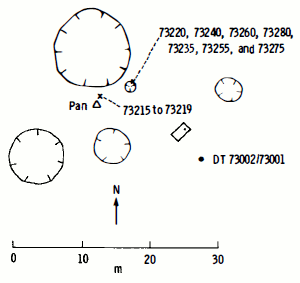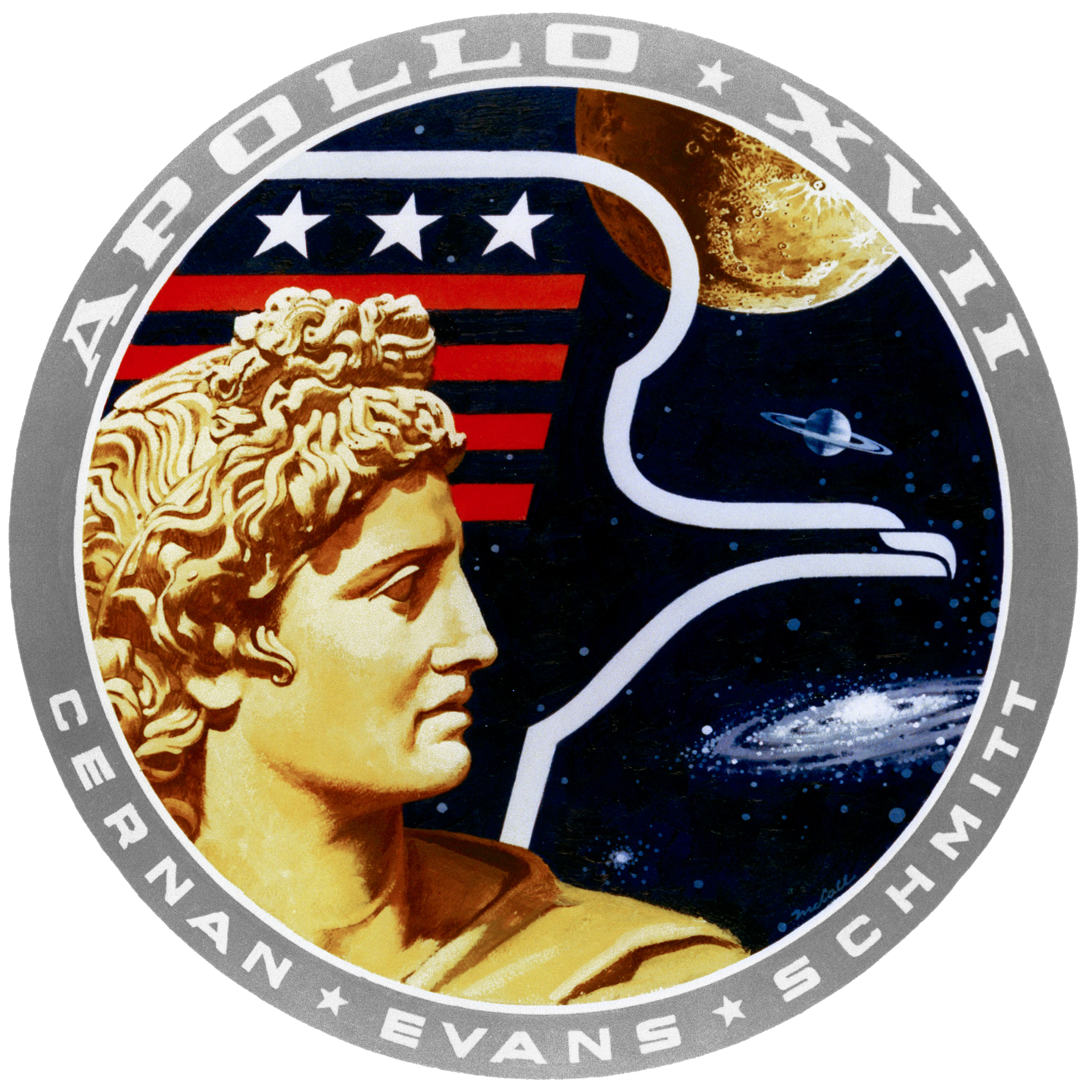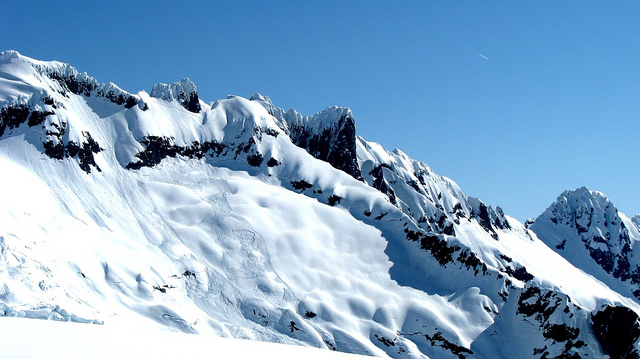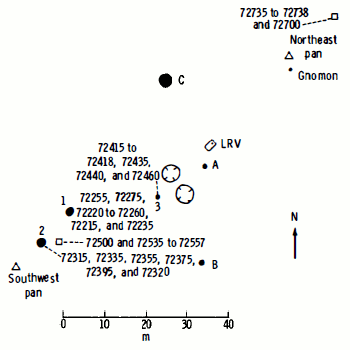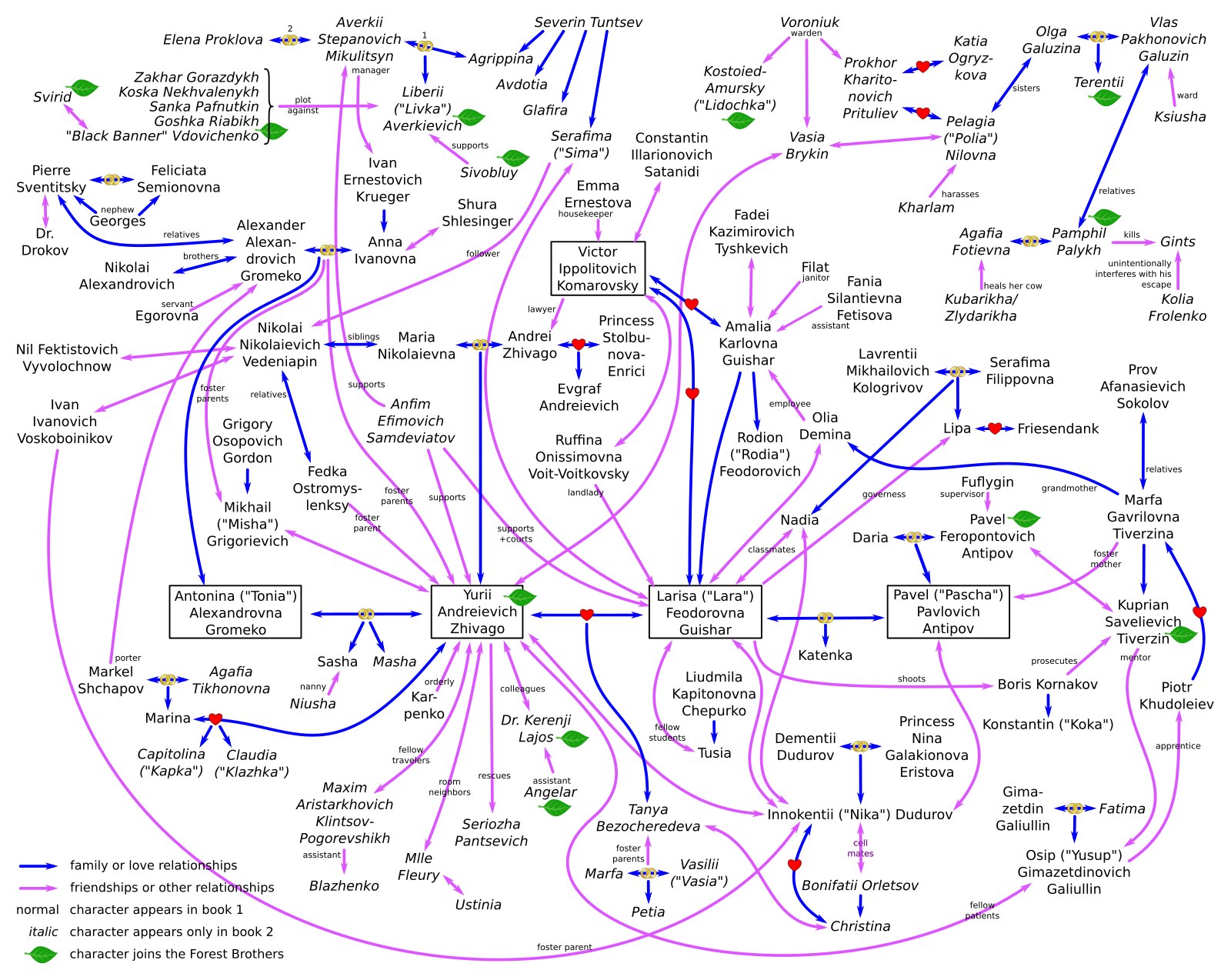|
Lara (lunar Crater)
Lara is a feature on Earth's Moon, a crater in Taurus-Littrow valley. Astronauts Eugene Cernan and Harrison Schmitt visited it in 1972, on the Apollo 17 mission, during Extra-vehicular activity, EVA 2. Geology Station 3 of the mission is located on the northeast rim of Lara. Lara is located in the 'light mantle' which is almost certainly an avalanche deposit from the South Massif. To the south of Lara is Nansen-Apollo (crater), Nansen crater and Geology Station 2. To the northeast is Shorty (crater), Shorty crater and Geology Station 4. The crater was named by the astronauts after the heroine of the novel ''Doctor Zhivago (novel), Doctor Zhivago'' by Boris Pasternak. Apollo 17 Lunar Surface Journal, Corrected Transcript and Commentary Copyright 1995 by Eric M. Jones [...More Info...] [...Related Items...] OR: [Wikipedia] [Google] [Baidu] |
Lara Crater AS17-P-2750 ASU
Lara may refer to: People * Lara (name), can be a given name or a surname in several languages * Lara (mythology), a naiad nymph, daughter of the river Almo in Ovid's ''Fasti'' Places *Lara (state), a state in Venezuela *Electoral district of Lara, an electoral district in Victoria, Australia *Lara, Antalya, an urban district in Turkey *Lara, Victoria, a township in Australia **Lara railway station *Lara de los Infantes, a place in Spain *Punta Lara, a city in Buenos Aires Province, Argentina *LARA, the airport code for Jacinto Lara International Airport, in Barquisimeto, Venezuela Art, entertainment, and media * Lara (film), ''Lara'' (film), 2019 film * Lara (character), the biological mother of the comic book character Superman * Lara (novel), 1997 novel-in-verse by Bernardine Evaristo * Lara & Reyes, an instrumental band * ''Lara's Theme'', the generic name given to a leitmotif written for the film ''Doctor Zhivago'' (1965) by composer Maurice Jarre * ''Lara, A Tale'' (18 ... [...More Info...] [...Related Items...] OR: [Wikipedia] [Google] [Baidu] |
Moon
The Moon is Earth's only natural satellite. It Orbit of the Moon, orbits around Earth at Lunar distance, an average distance of (; about 30 times Earth diameter, Earth's diameter). The Moon rotation, rotates, with a rotation period (lunar day) that is synchronized to its orbital period (Lunar month#Synodic month, lunar month) of 29.5 Earth days. This is the product of Earth's gravitation having tidal forces, tidally pulled on the Moon until one part of it stopped rotating away from the near side of the Moon, near side, making always the same lunar surface face Earth. Conversley, the gravitational pull of the Moon, on Earth, is the main driver of Earth's tides. In geophysical definition of planet, geophysical terms, the Moon is a planetary-mass object or satellite planet. Its mass is 1.2% that of the Earth, and its diameter is , roughly one-quarter of Earth's (about as wide as the contiguous United States). Within the Solar System, it is the List of Solar System objects by ... [...More Info...] [...Related Items...] OR: [Wikipedia] [Google] [Baidu] |
Eugene Cernan
Eugene Andrew Cernan (; March 14, 1934 – January 16, 2017) was an American astronaut, United States naval aviator, naval aviator, electrical engineer, aeronautical engineer, and fighter pilot. Cernan traveled into space three times and to the Moon twice: as pilot of Gemini 9A in June 1966, as lunar module pilot of Apollo 10 in May 1969, and as commander of Apollo 17 in December 1972, the final Apollo Moon landing, lunar landing. He was also a backup crew member of Gemini 12, Apollo 7, and Apollo 14. During the Apollo 17 mission, he became the 11th person to walk on the Moon as well as the astronaut with the longest time spent walking on the Moon; he is also the last person to walk on the Moon. Before becoming an astronaut, Cernan graduated with a bachelor of science degree in electrical engineering from Purdue University in Indiana, and joined the United States Navy, U.S. Navy through the Naval Reserve Officers Training Corps (NROTC). After flight training, he received ... [...More Info...] [...Related Items...] OR: [Wikipedia] [Google] [Baidu] |
Harrison Schmitt
Harrison Hagan "Jack" Schmitt (born July 3, 1935) is an American geologist, former NASA astronaut, university professor, former U.S. senator from New Mexico. He is the most recent living person—and only person without a background in military aviation—to have walked on the Moon. In December 1972, as a crewmember of Apollo 17, Schmitt became the first member of NASA Astronaut Group 4, NASA's first scientist-astronaut group to fly in space. As Apollo 17 was the last of the Apollo program, Apollo missions, he also became the List of Apollo astronauts#People who have walked on the Moon, twelfth and second-youngest person to set foot on the Moon and the second-to-last person to step off of the Moon (he boarded the Apollo Lunar Module, Lunar Module shortly before commander Eugene Cernan). Schmitt also remains the only professional scientist to have flown beyond low Earth orbit and to have visited the Moon. Before training for Apollo 17, he was influential in the geology field for su ... [...More Info...] [...Related Items...] OR: [Wikipedia] [Google] [Baidu] |
Apollo 17
Apollo 17 (December 7–19, 1972) was the eleventh and final mission of NASA's Apollo program, the sixth and most recent time humans have set foot on the Moon. Commander Gene Cernan and Lunar Module Pilot Harrison Schmitt walked on the Moon, while Command Module Pilot Ronald Evans (astronaut), Ronald Evans orbited above. Schmitt was the only professional geologist to land on the Moon; he was selected in place of Joe Engle, as NASA had been under pressure to send a scientist to the Moon. The mission's heavy emphasis on science meant the inclusion of a number of new experiments, including a Fe, Fi, Fo, Fum, and Phooey, biological experiment containing five mice that was carried in the command module. Mission planners had two primary goals in deciding on the landing site: to sample Lunar highlands, lunar highland material older than that at Mare Imbrium and to investigate the possibility of relatively recent Volcano, volcanic activity. They therefore selected Taurus–Littrow, wh ... [...More Info...] [...Related Items...] OR: [Wikipedia] [Google] [Baidu] |
Extra-vehicular Activity
Extravehicular activity (EVA) is any activity done by an astronaut in outer space outside a spacecraft. In the absence of a breathable Earthlike atmosphere, the astronaut is completely reliant on a space suit for environmental support. EVA includes spacewalks and lunar or planetary surface exploration (commonly known from 1969 to 1972 as moonwalks). In a stand-up EVA (SEVA), an astronaut stands through an open hatch but does not fully leave the spacecraft. EVAs have been conducted by the Soviet Union/Russia, the United States, Canada, the European Space Agency and China. On March 18, 1965, Alexei Leonov became the first human to perform a spacewalk, exiting the Voskhod 2 capsule for 12 minutes and 9 seconds. On July 20, 1969, Neil Armstrong became the first human to perform a moonwalk, outside his lunar lander on Apollo 11 for 2 hours and 31 minutes. In 1984, Svetlana Savitskaya became the first woman to perform a spacewalk, conducting EVA outside the Salyut 7 space stati ... [...More Info...] [...Related Items...] OR: [Wikipedia] [Google] [Baidu] |
Avalanche
An avalanche is a rapid flow of snow down a Grade (slope), slope, such as a hill or mountain. Avalanches can be triggered spontaneously, by factors such as increased precipitation or snowpack weakening, or by external means such as humans, other animals, and earthquakes. Primarily composed of flowing snow and air, large avalanches have the capability to capture and move ice, rocks, and trees. Avalanches occur in two general forms, or combinations thereof: slab avalanches made of tightly packed snow, triggered by a collapse of an underlying weak snow layer, and loose snow avalanches made of looser snow. After being set off, avalanches usually accelerate rapidly and grow in mass and volume as they capture more snow. If an avalanche moves fast enough, some of the snow may mix with the air, forming a powder snow avalanche. Though they appear to share similarities, avalanches are distinct from slush flows, Mudflow, mudslides, Landslide#Debris landslide, rock slides, and serac collap ... [...More Info...] [...Related Items...] OR: [Wikipedia] [Google] [Baidu] |
Nansen-Apollo (crater)
Nansen-Apollo is a feature on Earth's Moon, a crater in Taurus-Littrow valley, at the base of the South Massif. Astronauts Eugene Cernan and Harrison Schmitt visited it in 1972, on the Apollo 17 mission. The astronauts referred to it simply as Nansen during the mission. Geology Station 2 of the mission was located at Nansen. Nansen is located in the 'light mantle' which is almost certainly an avalanche deposit from the South Massif. To the north of Nansen is Lara crater and Geology Station 3. To the northeast is Shorty and Geology Station 4. About 5 km to the east are Mackin and Hess craters. The crater was named by the astronauts after Fridtjof Nansen Fridtjof Wedel-Jarlsberg Nansen (; 10 October 1861 – 13 May 1930) was a Norwegian polymath and Nobel Peace Prize laureate. He gained prominence at various points in his life as an explorer, scientist, diplomat, humanitarian and co-founded the ..., a Norwegian explorer. [...More Info...] [...Related Items...] OR: [Wikipedia] [Google] [Baidu] |
Shorty (crater)
Shorty is a feature on the Moon, an impact crater in the Taurus–Littrow valley. Astronauts Eugene Cernan and Harrison Schmitt visited it in 1972, on the Apollo 17 mission. It is the location of the famous "orange soil", which geologists believe to be small bits of rapidly-cooled molten rock ejected in a lava fountain. It is about in diameter and up to deep. To the east of Shorty are Victory, Camelot, and the Apollo 17 landing site. To the southeast is Brontë. To the southwest are Lara and Nansen. The crater was named after the character "Shorty" in Richard Brautigan's 1967 novel '' Trout Fishing in America'', as well as to honor the genre of the short story with particular reference to J. D. Salinger. File:Shorty crater AS17-P-2750 ASU.jpg, Apollo 17 panoramic camera image File:As17-137-21009.jpg, Exploring Shorty crater during the Apollo 17 Apollo 17 (December 7–19, 1972) was the eleventh and final mission of NASA's Apollo program, the sixth and most recent t ... [...More Info...] [...Related Items...] OR: [Wikipedia] [Google] [Baidu] |
Doctor Zhivago (novel)
''Doctor Zhivago'' ( ; ) is a novel by Russian poet, author and composer Boris Pasternak, first published in 1957 in Italy. The novel is named after its protagonist, Yuri Zhivago, a physician and poet, and takes place between the Russian Revolution of 1905 and World War II. Owing to the author's critical stance on the October Revolution, ''Doctor Zhivago'' was refused publication in the USSR. At the instigation of Giangiacomo Feltrinelli, the manuscript was smuggled to Milan and published in 1957. Pasternak was awarded the Nobel Prize for Literature the following year, an event that embarrassed and enraged the Communist Party of the Soviet Union. The novel was Doctor Zhivago (film), made into a film by David Lean in 1965, and since then has twice been adapted for television, most recently as a miniseries for Russian TV in 2006. The novel ''Doctor Zhivago'' has been part of the Russian school curriculum since 2003, where it is read in 11th grade. Plot summary The plot of ''Doct ... [...More Info...] [...Related Items...] OR: [Wikipedia] [Google] [Baidu] |
Boris Pasternak
Boris Leonidovich Pasternak (30 May 1960) was a Russian and Soviet poet, novelist, composer, and literary translator. Composed in 1917, Pasternak's first book of poems, ''My Sister, Life'', was published in Berlin in 1922 and soon became an important collection in the Russian language. Pasternak's translations of stage plays by Johann Wolfgang von Goethe, Goethe, Friedrich Schiller, Schiller, Pedro Calderón de la Barca, Calderón de la Barca and William Shakespeare, Shakespeare remain very popular with Russian audiences. Pasternak was the author of ''Doctor Zhivago (novel), Doctor Zhivago'' (1957), a novel that takes place between the Russian Revolution of 1905 and the Second World War. ''Doctor Zhivago'' was rejected for publication in the Soviet Union, USSR, but the manuscript was smuggled to Italy and was first published there in 1957. Pasternak was awarded the Nobel Prize in Literature in 1958, an event that enraged the Communist Party of the Soviet Union, which forced him ... [...More Info...] [...Related Items...] OR: [Wikipedia] [Google] [Baidu] |
